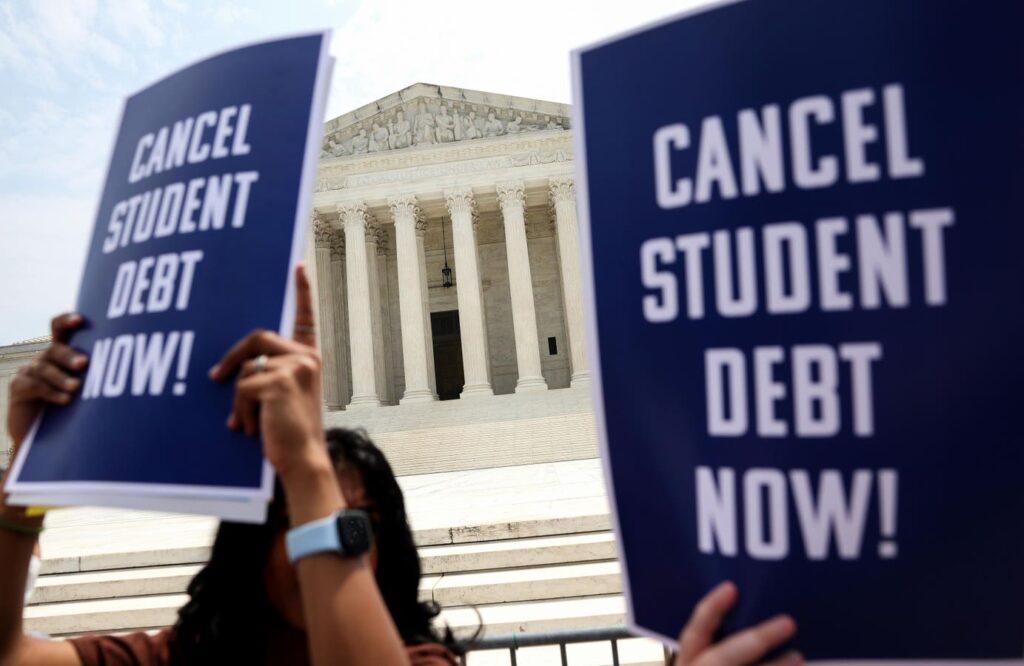On June 30, 2023, activists advocating for student loan forgiveness rallied outside the U.S. Supreme Court, highlighting the pervasive legal challenges that have stalled progress on the Biden administration’s SAVE plan. The SAVE (Saving on A Valuable Education) plan, which aims to reduce monthly payments for borrowers, had initially provided relief to over eight million individuals since its rollout last fall. This income-driven repayment plan not only lowers repayments but also safeguards against excessive interest accrual, thus preventing loan balances from multiplying. Moreover, it offers a pathway to loan forgiveness after as little as ten years for borrowers who incurred modest debt. However, due to legal lawsuits pushed by Republican-led states, the program is currently in a state of suspension.
Following a federal appeals court’s injunction in August, borrowers who had enrolled in the SAVE plan were forced into a forbearance period. This decision paused their journey toward loan forgiveness, causing further uncertainty for many. While borrowers are exempt from making payments during forbearance and accumulate no interest, time spent under this status does not contribute to their eligibility for loan forgiveness under both IDR (Income-Driven Repayment) plans and PSLF (Public Service Loan Forgiveness). As the Biden administration grapples with this setback, the Education Department has shed light on the potential duration of the forbearance period and critical implications for borrowers.
New guidance from the Education Department indicates that the SAVE plan forbearance could remain in effect for at least six more months, with possibilities extending beyond that. The timeframe hinges on the appeals process with the 8th Circuit Court of Appeals, which may take additional time due to anticipated appeals to the U.S. Supreme Court, potentially delaying final resolutions until the summer of 2025. This period of uncertainty leaves many borrowers in a precarious situation as they navigate their options for student loan forgiveness.
In addition to confirming the current status of the SAVE plan, the Education Department acknowledged that forgiveness under other IDR plans, such as PAYE (Pay As You Earn) and ICR (Income-Contingent Repayment), is now blocked due to the 8th Circuit’s injunction. Although these existing programs are still operational, borrowers who would normally qualify for forgiveness under these plans are also rendered ineligible during this litigation phase. Notably, while these borrowers are still able to make payments and progress toward forgiveness, the prospect of receiving debt relief remains uncertain.
The guidance also brought forth potential alternatives that might help borrowers reclaim their path toward forgiveness despite the ongoing judicial roadblocks. The Education Department indicated plans to reinstate access to the PAYE and ICR plans through an upcoming regulatory process and hinted at the formation of an “IDR Buyback” program. This prospective program could allow borrowers to retroactively count the time spent in forbearance toward their loan forgiveness. These new initiatives could provide some hope amid the ongoing litigation, although timelines for their implementation remain vague.
Despite the setbacks with the SAVE plan, the Income-Based Repayment (IBR) option remains unaffected by the court injunction and continues to allow borrowers to work toward loan forgiveness on a standard 20- or 25-year term. The Education Department confirmed that processing for applications related to IBR will resume soon, providing an opportunity for borrowers to change their plans. However, borrowers should keenly consider potential drawbacks, such as potentially higher payments under IBR and the absence of the interest safeguards that the SAVE plan offers, which could lead to an increase in their loan balances during repayment. As the situation unfolds, many borrowers are left grappling with complex choices regarding their student loan repayment paths.

